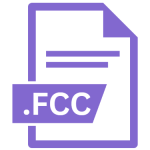.DICPROOF File Extension

Microsoft Dictionary Proofing File
| Developer | Microsoft |
| Popularity | |
| Category | Settings Files |
| Format | .DICPROOF |
| Cross Platform | Update Soon |
What is an DICPROOF file?
The .DICPROOF file extension is associated with Microsoft Office applications, particularly those that utilize proofing tools for text, such as Word and Outlook.
These files play a crucial role in enhancing the user’s writing experience by providing dictionary-based proofing capabilities.
The .DICPROOF file contains a dictionary used by Microsoft’s proofing tools to check spelling, grammar, and other linguistic elements in documents.
This file type is an essential part of the ecosystem that supports language accuracy and consistency in Microsoft Office products.
More Information.
The .DICPROOF file format was introduced with the Microsoft Office suite to provide enhanced proofing capabilities.
Initially, Microsoft Office utilized basic dictionary files that supported limited languages and proofing rules. As global markets expanded and the need for multi-lingual support grew, Microsoft developed more sophisticated proofing tools, leading to the creation of the .DICPROOF file format.
The primary purpose of the .DICPROOF file was to store dictionary data that could be accessed by Microsoft’s proofing tools to ensure that the content being created or edited adhered to the linguistic standards of the specified language.
This was particularly important for users who frequently worked with multiple languages or specialized terminologies, as the .DICPROOF files allowed for customized and accurate proofing based on specific linguistic rules and dictionaries.
Origin Of This File.
The .DICPROOF file format was developed by Microsoft Corporation to support the linguistic accuracy tools embedded in its Office suite.
The need for robust proofing tools arose as word processing became more sophisticated, and users required advanced features to ensure the correctness of their documents.
Before the advent of .DICPROOF files, earlier versions of Microsoft Office used simpler dictionary formats that offered basic spell-checking functions.
The .DICPROOF extension represents an evolution in this area, incorporating more advanced proofing algorithms and a wider range of linguistic rules.
File Structure Technical Specification.
The .DICPROOF file is structured to hold complex linguistic data that is utilized by Microsoft Office’s proofing tools. Typically, these files are composed of several key components:
- Lexical Data: The .DICPROOF file contains a comprehensive list of words, phrases, and terminologies that are specific to a language or a particular domain (e.g., legal, medical). This data forms the basis of the proofing tools’ ability to recognize correct spellings and suggest alternatives.
- Linguistic Rules: Beyond simple word lists, .DICPROOF files also include rules for grammar, punctuation, and style. These rules help the proofing tools identify not just spelling errors but also grammatical inconsistencies and stylistic issues.
- Language-Specific Configurations: For each language supported, the .DICPROOF file may include unique settings that govern how the proofing tools behave. This could involve specific preferences for handling dialects, regional variations, and idiomatic expressions.
- Metadata: The file also contains metadata that identifies the language, version of the dictionary, and other relevant information. This metadata is crucial for ensuring that the correct proofing data is applied to the right context.
The .DICPROOF file is typically binary, making it both efficient and secure, as it prevents easy tampering or accidental corruption by the user.
How to Convert the File?
Converting .DICPROOF files to other formats is generally not recommended, as these files are highly specialized and tied to Microsoft Office’s proofing tools.
If there is a need to extract data or convert the contents, users would typically need to rely on third-party tools or scripts.
These tools can read the binary data and export it to a more accessible format, such as a plain text dictionary file (.TXT) or a custom dictionary format (.DIC) used by other applications.
Given the complexity of the .DICPROOF file structure, any conversion process should be approached with caution to avoid data loss or corruption.
Additionally, converting .DICPROOF files may strip away advanced proofing rules, reducing the effectiveness of the dictionary data in its new format.
Advantages And Disadvantages.
Advantages:
- Enhanced Proofing Accuracy: The .DICPROOF file format enables Microsoft Office’s proofing tools to provide more accurate and context-aware suggestions, improving the overall quality of documents.
- Multi-Language Support: With .DICPROOF files, Microsoft Office can support multiple languages and dialects, making it a versatile tool for global users.
- Customization: Users can add custom dictionaries or modify existing ones, allowing for specialized terminology and industry-specific language to be included in the proofing process.
- Integration: The .DICPROOF file seamlessly integrates with Microsoft Office applications, ensuring that the proofing tools work efficiently without the need for additional software or plugins.
Disadvantages:
- Limited Compatibility: The .DICPROOF file is proprietary to Microsoft Office, meaning it cannot be easily used with other word processing tools outside of the Microsoft ecosystem.
- Complexity: For average users, the .DICPROOF file is not easily accessible or modifiable, which can be a disadvantage if users want to customize proofing settings without advanced technical knowledge.
- File Corruption: As with any binary file, .DICPROOF files can become corrupted, which may lead to issues with proofing tools, such as incorrect or missing suggestions.
- Dependence on Microsoft Office: Users are dependent on Microsoft Office for utilizing .DICPROOF files, limiting the flexibility of using different office suites or text editors.
How to Open DICPROOF?
Open In Windows
On Windows, .DICPROOF files are automatically utilized by Microsoft Office applications. Users do not need to manually open or modify these files. Advanced users can navigate to the Microsoft Office installation directory to locate .DICPROOF files if needed.
- Microsoft Word: Open any document, and the .DICPROOF file is automatically loaded to support the proofing tools.
- Microsoft Outlook: When composing an email, the proofing tools use the .DICPROOF file to check for spelling and grammar errors.
Open In Linux
- Microsoft Office is not natively supported on Linux, and thus .DICPROOF files are not typically used on this operating system. Users running Microsoft Office through compatibility layers like Wine may still have access to .DICPROOF files, although with limited functionality.
Open In MAC
- Similar to Windows, on macOS, .DICPROOF files are managed internally by Microsoft Office for Mac. Users typically do not interact with these files directly. The proofing tools in Word, Excel, and other Office applications will automatically load the .DICPROOF files.












